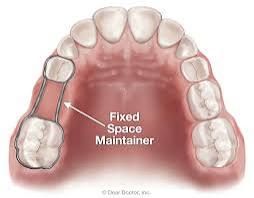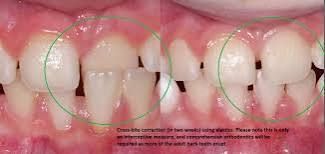Interceptive procedures in orthodontics refers to procedures undertaken when maloclussion has already set in or in its developing stage
In basic terms, it refers to procedural steps undertaken in order to prevent a setting maloclussion to proceed into a more severe one.
The major difference between preventive orthodontics and Interceptive orthodontics is timing of when the procedure is taking and as such it is noted in preventive orthodontics procedures the dentition and maloclussion are normal while in Interceptive procedures are carried out when signs and symptoms of maloclussion have already appeared.
So the difference is more of timing rather than procedures become some of the procedures that is carried out in preventive orthodontics are also carried out in Interceptive orthodontics.
Interception is from the word meaning to intercede which depicts to stop something from making further advancement in a layman language.
In a nutshell, Interceptive orthodontics is the art of dentistry which aims to recognise and put an halt to potential irregularities and unbalanced architecture of the developing dentofacial complex which could result into severe maloclussion.
Procedures which are undertaken in Interceptive maloclussion includes the followings:
1- Serial Extraction
2- Control of abnormal habits which has shown effect on normal occlusion.
3- Space regaining
4- Oral muscle exercises
5- Interception of skeletal malrelation especially the jaws
6- Correction of developing crossbites and other forms of bites
7- Elimination or removal of soft tissues or bony barriers or spicules that tends to block the eruption path of a tooth
Now, let's dive into the first procedure of Interceptive orthodontics according to the aforementioned procedures above which is "SERIAL EXTRACTION"
Kjellgren was the first to use the term Serial Extraction in 1929 to refer to a procedure in which some deciduous teeth followed by some permanent teeth were extracted out in order to guide the rest of the available tooth into normal occlusion.
That's what serial extraction is basically about.
Serial extraction is an Interceptive orthodontic procedure which is usually employed in the early mixed dentition stage when a potential irregularities and abnormal occlusal relationship is recognised and anticipated in the dentofacial structure.
It is usually carried out by some certain deciduous teeth follow by some marked out permanent teeth in an appropriate sequence and previewed pattern so as to give chance for the erupting permanent into a normal favourable condition.
Rationale Behind the use of Serial Extraction
The use of Serial Extraction is basically based on two things which are as follows:
1- Arch length- tooth material discrepancy
2- Physiologic tooth movement
1- Arch Length-Tooth Material Discrepancy
When an excess tooth material is spotted in the dental arch or simply put a tooth makeup constituents is noticed as compared to the available arch length, it is usually recommended to reduce the tooth material by selective extraction of teeth so that the rest of the teeth could be appropriately guided into normal scheme of occlusion.
2- Physiologic Tooth Movement
Human tooth in general usually shows potential shifting towards an extraction space therefore by careful selective removal of some teeth out of the dental arch the remaining teeth which are in eruptive stage are guided by the influence natural forces into the space left behind by extraction.
Clinical Indicators that could prompt the use of Serial Extraction by Orthodontists:
A- Class I maloclussion which depicts normal relationship between skeletal and muscular system.
B- Presence of arch length deficiency with reference to the available tooth material which is widely to be the major indication for serial extraction.
The presence of likelihood of arch length deficiency is indicated by one of the following:
1- Lack of physiologic spacing
2- Unilateral or bilateral early (premature) loss of deciduous canines with resultant midline shifting
3- Malpositioned or impacted maxillary lateral incisors that erupted out of the arch along the palate.
4- Significant irregular or overcrowding in the upper and lower anteriors
5- Abnormal eruption path or ectopic eruption of teeth
6- Mesial shift or drifting of the buccal segment of the teeth
7- Abnormal eruption sequence and pattern of teeth
8- Lower anterior widening
9- Ankylosis of one or more teeth
10- Over retained primary tooth
C- Lack of sufficient growth to overcome the available discrepancy between tooth material and basal bone
D- Patient with straight facial profile and good esthetic appearance.
Contraindications of Serial Extraction
As it is generally known that the major factor in the usage of serial extraction is the lack of sufficient space so any dental arch with sufficient or more than enough space, a serial extraction procedure is ruled out in such cases.
Some of these cases include the following;
1- Class II and III maloclussion with skeletal involvement
2- spaced dentition
3- Presence of Anodontia or Oligodontia
4- Midline Diastema
5- open bite and deep bite
6- Class I maloclussion with little deficiency of space
7- Presence of extensive caries or heavily restored tooth especially the first permanent molars
8- Mild or low differences between arch length and tooth material make-up that could be easily by other means of orthodontic treatment other extraction such as the use of proximal striping and so on.
To avoid lengthy write-up, the post would be halted at this juncture atleast for now and be concluded in the subsequent posts.
Thanks for the Usual Support and Happy Sereying 🌴🌴🦷🦷🦷🦷🌴🦷
Thumbnail Source Cross-posted from Blurt Account



Comments